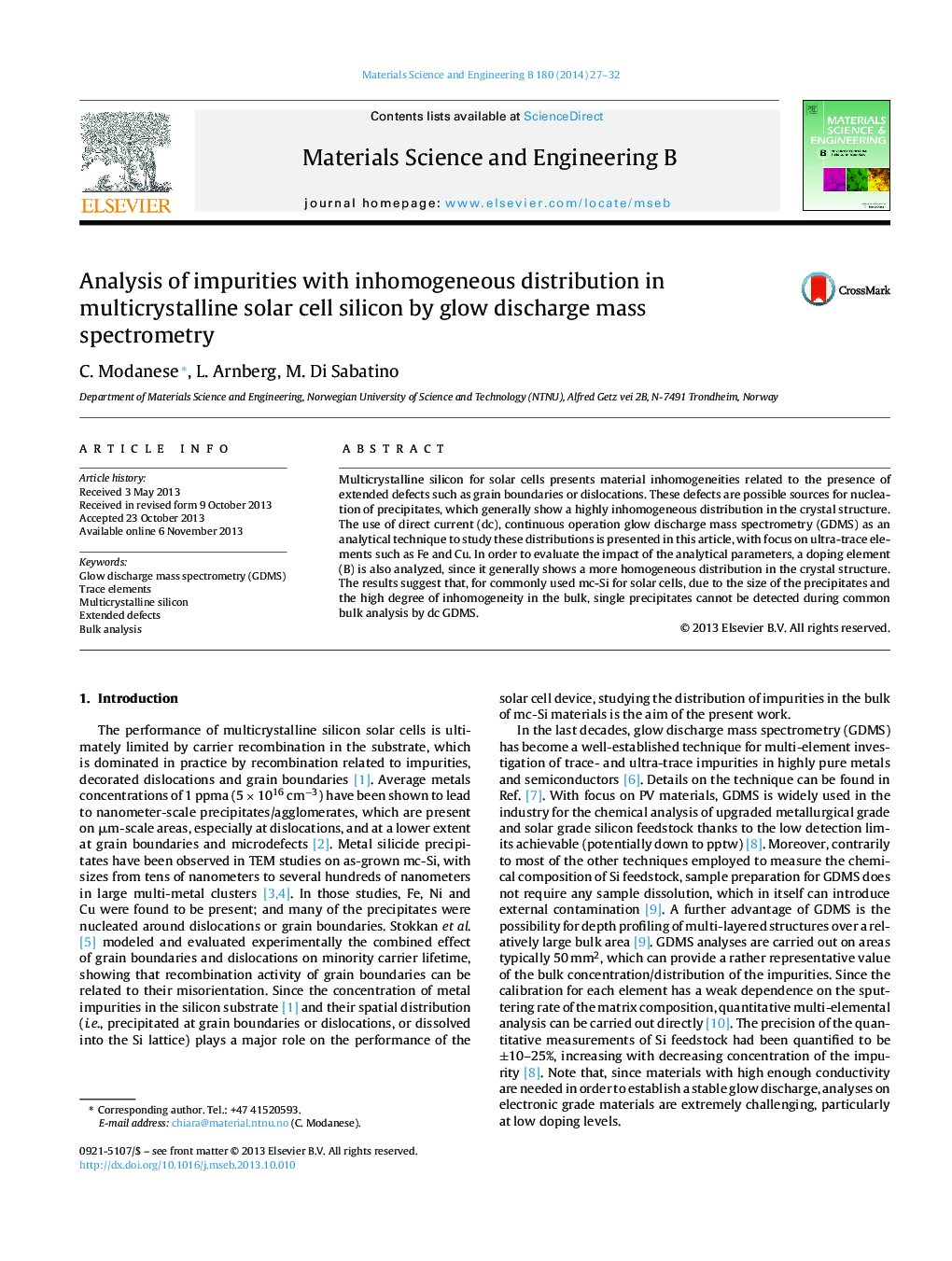| Article ID | Journal | Published Year | Pages | File Type |
|---|---|---|---|---|
| 1528766 | Materials Science and Engineering: B | 2014 | 6 Pages |
•The bulk distribution of trace elements in solar cell silicon is studied by GDMS.•Direct current operation mode is effective for analysis of ultra-trace elements.•The analyses show high accuracy and reproducibility.•Inhomogeneous precipitates distribution in the bulk hinders their investigation.
Multicrystalline silicon for solar cells presents material inhomogeneities related to the presence of extended defects such as grain boundaries or dislocations. These defects are possible sources for nucleation of precipitates, which generally show a highly inhomogeneous distribution in the crystal structure. The use of direct current (dc), continuous operation glow discharge mass spectrometry (GDMS) as an analytical technique to study these distributions is presented in this article, with focus on ultra-trace elements such as Fe and Cu. In order to evaluate the impact of the analytical parameters, a doping element (B) is also analyzed, since it generally shows a more homogeneous distribution in the crystal structure. The results suggest that, for commonly used mc-Si for solar cells, due to the size of the precipitates and the high degree of inhomogeneity in the bulk, single precipitates cannot be detected during common bulk analysis by dc GDMS.
Graphical abstractFigure optionsDownload full-size imageDownload as PowerPoint slide
